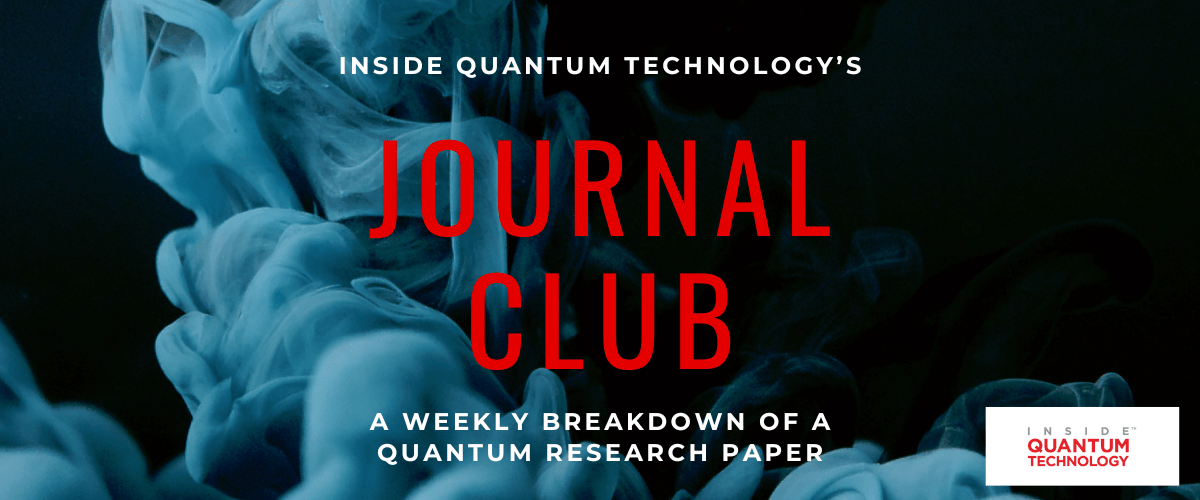
IQT’s “Journal Club” is a weekly article series that breaks down a recent quantum technology research paper and discusses its impacts on the quantum ecosystem. This article focuses on a recent paper studying quantum networks and satellite communications.
Quantum satellite networking, as detailed in the recent study in IEEE Access, represents a groundbreaking convergence of quantum technology and satellite communications, with profound implications for the quantum industry. This integration is pivotal for realizing quantum key distribution (QKD) and quantum-state transfer, which is essential for secure global communication.
Quantum Key Distribution and Satellite Orbits:
The study delves into discrete variable (DV) and continuous variable (CV) QKD schemes, each offering unique advantages for satellite-assisted quantum networks. DV QKD is akin to creating a secret code where the orientation of each photon carries a piece of the message. This technique is particularly adept at crafting secure cryptographic keys akin to secret passwords or codes that only the intended sender and receiver can understand and use. DV QKD involves encoding information using the properties of individual quantum states, like photon polarization, suitable for these secure keys.
On the other hand, Continuous Variable Quantum Key Distribution (CV QKD) works a bit differently. Rather than relying on distinct quantum states, it encodes information using a range of values. Think of it like a dimmer switch on a light, where you can adjust the brightness to any level between fully on and off. This method is particularly effective in situations where there’s a lot of “noise” or disturbance, as it’s more resilient and can maintain the integrity of the message under less-than-ideal conditions.
A strategic choice of satellite orbits, particularly Low Earth Orbit (LEO) and Geosynchronous Orbit (GEO), is crucial for optimizing QKD performance. Satellites in Low Earth Orbit (LEO) are closer to the Earth than a nearby cell tower. They offer a strong connection to the ground stations but cover a smaller area. This proximity makes them ideal for quick and efficient communication, but their range is limited.
In contrast, satellites in Geosynchronous Orbit (GEO) are much farther away. They operate like distant radio towers, covering a vast area but with weaker direct signals. GEO satellites can cover almost a third of the planet, providing wider coverage albeit with more signal delay.
LEO and GEO have distinct roles in quantum networks, with LEO being great for fast, efficient communication within a limited area and GEO offering broader coverage with some compromises in speed.
Software-Defined Networking (SDN) Integration and Quantum Computing:
Software-defined networking (SDN) in quantum satellite networking can be considered a highly advanced and adaptable traffic control system for data. It’s like having a central command center that can instantly reroute data traffic to avoid congestion and ensure a smooth flow of communication. This integration results in a significant increase in the rate of quantum entanglement generation, which is a key component of secure communication. It also simplifies the management of these quantum connections, ensuring that the quantum network operates efficiently and effectively.
With its immense processing power, quantum computing can significantly enhance the security of satellite information networks. Just as a powerful computer can make complex tasks like video editing smoother and faster, quantum computing can bolster the security mechanisms of these networks, making them extremely difficult to compromise.
For Internet of Things (IoT) devices, such as smart cars or drones, which rely on swift and secure communication, the reduced delay offered by quantum computing is crucial. This enhancement is akin to having a high-speed internet connection that allows for seamless streaming of high-definition videos without buffering.
Future Exploration:
The paper proposes domains ripe for future exploration in this burgeoning field. Quantum satellite networking is at the forefront of enabling a quantum Internet that can revolutionize various industries. This involves using satellites as quantum repeaters to connect terrestrial quantum computers and establish secure keys between parties.
Kenna Hughes-Castleberry is the Managing Editor at Inside Quantum Technology and the Science Communicator at JILA (a partnership between the University of Colorado Boulder and NIST). Her writing beats include deep tech, quantum computing, and AI. Her work has been featured in Scientific American, Discover Magazine, New Scientist, Ars Technica, and more.
- SEO Powered Content & PR Distribution. Get Amplified Today.
- PlatoData.Network Vertical Generative Ai. Empower Yourself. Access Here.
- PlatoAiStream. Web3 Intelligence. Knowledge Amplified. Access Here.
- PlatoESG. Carbon, CleanTech, Energy, Environment, Solar, Waste Management. Access Here.
- PlatoHealth. Biotech and Clinical Trials Intelligence. Access Here.
- Source: https://www.insidequantumtechnology.com/news-archive/iqts-journal-club-a-new-ieee-paper-on-quantum-computing-and-satellite-communications/



